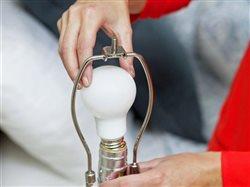Simple steps to reduce winter energy costs
Winter’s falling temperatures typically lead to higher energy costs as we try to keep our home interiors comfortably warm. At the same time, many of us are concerned about the environmental impact of winter’s increased energy use.
Is there anything simple a handy homeowner or renter can do to save some money and energy? There is.
Actually, many easy and inexpensive do-it-yourself projects help cut down on wasted energy that drains the pocketbook. Most of these projects involve picking up a few energy-saving products made with modern, durable plastic materials – products specifically designed to prevent unwanted loss of warm air throughout the home.
Where to focus? Attic doors, fireplaces, windows and exterior doors, along with electric switches and outlets and air vents, often are not sealed adequately, which leads to warm air flowing out and cold air sneaking in. Taking a few moments to help inhibit leaks in these areas can provide a quick and easy return on time and money invested.
Attic
First check to see if any missing or damaged insulation needs to be replaced. Consider placing sheets of foam polystyrene plastic on top of existing insulation, which is an uncomplicated way to help block unwanted airflow. Also take a look at the attic door or entry hatch – if it’s not well sealed, pick up some plastic foam weather stripping at the local hardware store and press it around the perimeter to help keep cold air in the attic and warm air in your living space.
Fireplace
Oh the irony ... although designed to heat a room, the fireplace often allows cold air to enter your house. Even when the chimney flue is closed, cold air can seep in and chill the room. An innovative product known as a “chimney pillow,” “fireplace plug,” or “chimney balloon” is a nifty solution. You simply inflate a tough, durable plastic bag that fits snugly inside the chimney, forming a plug that can dramatically reduce airflow while the fireplace isn’t in operation. After installation, the pillow’s inflation tube hangs down into the fireplace to remind you to remove it before lighting a fire.
Windows and doors
Even when closed, windows and doors still can let in cold air – especially older ones that don’t form a tight seal. You can help stop unwanted airflow and make your existing windows and doors more efficient with a few affordable products from the hardware store.
For example, adding plastic caulks (such as silicone) around the frames both indoors and outdoors can help close gaps where warm air could escape. You also can choose from a large variety of weather stripping – most are made with some type of plastic foam that helps trap air to provide a barrier between indoors and out. If you have significant gaps, try a polyurethane plastic foam sealant that expands to fill cracks – it’s usually sold in a can with a flexible tube applicator that makes it easy to use. And look into plastic window film that can be applied directly to the glass windowpane – it helps insulate the window while still providing a clear view.
Switches, outlets and ducts
Electrical switches and outlets are less obvious areas where energy can be wasted. Placing pre-cut, inexpensive plastic foam insulation sheets behind switch and outlet plate covers can help prevent air sneaking in and out.
Also check your home’s unheated areas (basement, attic and garage) for leaks in heating ducts, which can be a hidden culprit for air loss. These leaks can be quickly sealed with plastic-based caulks or polyurethane foam sealants, which are designed to fill cracks and crevices while resisting moisture and mildew.







